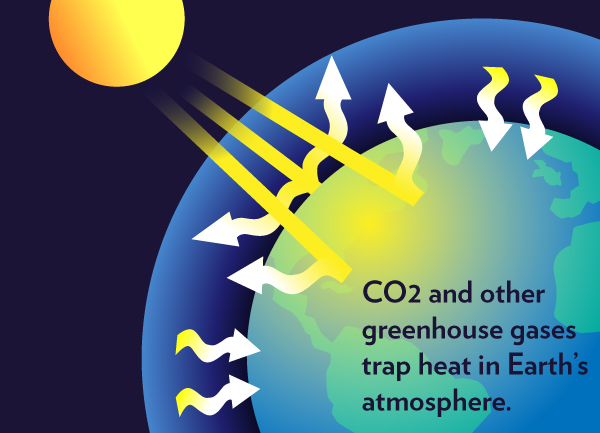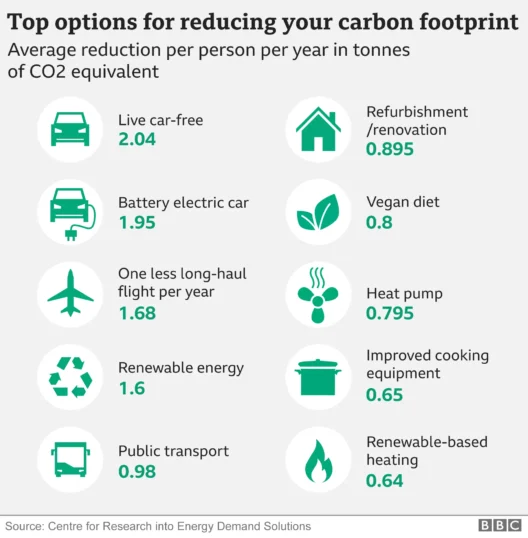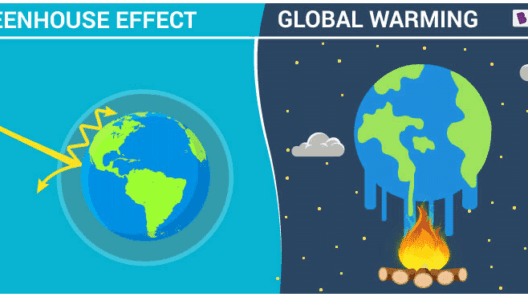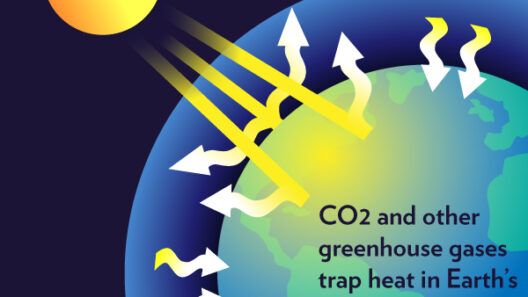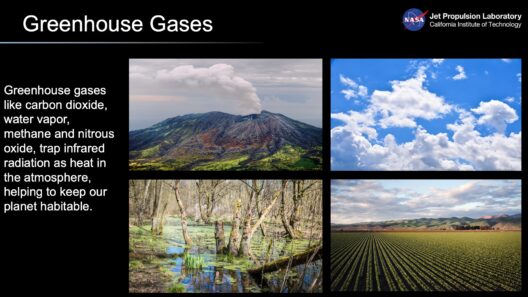The greenhouse effect is a natural phenomenon that keeps the Earth warm by trapping heat in the atmosphere. It is a process that involves several key components, including greenhouse gases (GHGs) such as carbon dioxide, methane, and nitrous oxide. Understanding the greenhouse effect is imperative as it directly links to climate change, a pressing global issue that threatens ecological balance and human prosperity. This article aims to elucidate the complex interplay between greenhouse gases and Earth’s climate, addressing concerns regarding their impact, and exploring potential solutions.
The fundamental principle of the greenhouse effect rests in the absorption and re-emission of infrared radiation by greenhouse gases. Solar energy reaches the Earth in the form of sunlight, which warms the planet. As the surface absorbs this energy, it re-radiates it in the form of heat. Greenhouse gases in the atmosphere capture a portion of this heat, preventing it from escaping back into space. This natural insulating layer is essential for maintaining temperatures conducive to life. However, human activities, particularly those associated with industrialization and fossil fuel combustion, have significantly amplified the presence of these gases, leading to an enhanced greenhouse effect.
As the concentration of greenhouse gases escalates, so does their capacity to trap heat, which inadvertently results in global warming. The corollary to this warming trend is climate change, marked by extreme weather conditions, changing precipitation patterns, and rising sea levels. Consequently, a nuanced understanding of greenhouse gases is crucial for addressing the array of challenges that accompany climate change.
The primary greenhouse gases contributing to climate change include carbon dioxide (CO2), methane (CH4), nitrous oxide (N2O), and fluorinated gases. Each variant has its unique characteristics and sources, necessitating a holistic approach to diminish their prevalence in the atmosphere.
Carbon dioxide is the most prevalent greenhouse gas, predominantly released through the combustion of fossil fuels for energy and transportation. Deforestation also exacerbates the issue, as fewer trees mean less CO2 absorption. Initiatives aimed at reforestation and carbon capture technology can play significant roles in mitigating CO2 levels.
Methane, while present in smaller quantities, possesses a far greater heat-trapping ability—over 25 times more effective than carbon dioxide over a century. Major sources of methane emissions include agriculture, particularly livestock digestion and manure management, as well as oil and gas extraction and landfills. Innovative practices such as anaerobic digestion can help capture methane, converting it into biogas and thereby reducing its environmental impact.
Nitrous oxide is another potent greenhouse gas, largely originating from agricultural activities, particularly synthetic fertilizer application. Its global warming potential is approximately 298 times that of CO2 over a century, making it a critical target for reduction strategies. Integrating sustainable agricultural practices, like crop rotation and reduced fertilizer usage, can mitigate nitrous oxide emissions significantly.
Fluorinated gases, though less common, are synthetic chemicals found in various industrial applications and have a disproportionately high global warming potential. These include hydrofluorocarbons (HFCs) used in refrigeration and air conditioning. The phase-out of HFCs has been recognized as a crucial step in reducing overall greenhouse gas emissions.
It is essential to explore how the accumulation of greenhouse gases alters climatic systems. As temperatures rise, ice sheets and glaciers are retreating at unprecedented rates, resulting in sea-level rise and threatening coastal communities worldwide. Furthermore, increased temperatures can disrupt ecosystems, leading to shifts in species distribution, altered plant growth cycles, and loss of biodiversity. The added stress on natural systems can also result in more frequent and intense weather events, such as hurricanes, droughts, and wildfires, causing widespread economic and humanitarian crises.
Transitioning towards a sustainable future requires robust action at both individual and societal levels. Reducing greenhouse gas emissions is paramount for ensuring the health of our planet and future generations. The implementation of renewable energy sources, such as solar, wind, and hydroelectric power, can substantially decrease reliance on fossil fuels. Encouraging energy efficiency in buildings and transportation can also contribute to lower emissions.
Additionally, policy frameworks, like international agreements, can accelerate collective efforts to combat climate change. The Paris Agreement aims to limit global warming to well below 2 degrees Celsius above pre-industrial levels, with aspirational efforts targeting a 1.5 degrees Celsius cap. Achieving such goals necessitates comprehensive strategies, innovative technologies, and, most importantly, a unified commitment to act.
Ultimately, public awareness and education are crucial in mitigating the effects of climate change. Individuals can play a pivotal role by making informed choices, such as reducing energy consumption, adopting sustainable practices, and advocating for stronger environmental policies. As society continues to grapple with the repercussions of climate change, fostering a climate-conscious culture can lead to meaningful change and ultimately safeguard the planet’s future.
Understanding the greenhouse effect and the impact of greenhouse gases on Earth’s climate is not merely an academic exercise; it is a call to action. The choices we make today will shape the environment of tomorrow, making it imperative that individuals and communities engage in proactive measures to confront this global challenge.



